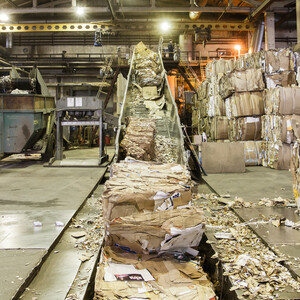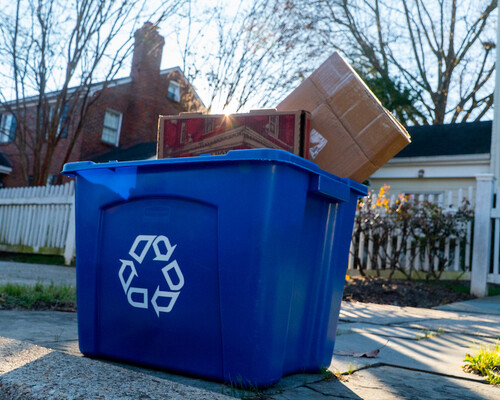Solutions to Minnesota's Packaging Waste and Cost Reduction Act
Why Are Lawmakers Rushing EPR for Packaging and Paper Products in Minnesota?
We are encouraged to see Minnesota lawmakers focus on improving recycling infrastructure. Recycling is a critical part of the U.S. paper industry. We have a track record of success in improving paper recycling.
Our industry first set a goal to help improve paper recycling in the 1990s. The recycling rate has doubled since that time.
We also have an ownership stake in the recycling system. AF&PA members own and operate more than 100 materials recovery facilities nationwide, including 2 in Minnesota. That’s where your recyclables are sorted and processed.
Recycled paper products are a key component of our circular value chain.
However, lawmakers are rushing to implement the Packaging Waste and Cost Reduction Act without considering the consequences to paper recycling.
What is Extended Producer Responsibility?
The Packaging Waste and Cost Reduction Act (HF 3577/SF 3561) is legislation that implements an extended producer responsibility (EPR) program for packaging and paper products.
EPR is a waste management strategy where brand owners, producers and material manufacturers pay for the end-of-life costs to recycle or dispose of products they put on the market.
EPR programs work well for hard-to-recycle materials like batteries and mattresses. They’re also effective when:
- Products are difficult to process
- Products have low recycling rates
- Healthy end markets do not exist
However, these issues don’t apply to paper and paper-based packaging in the U.S.
Paper Packaging and Printed Papers Are Widely Recycled in Minnesota

81%
of Minnesotans have access to curbside paper recycling programs

73%
have access to drop-off recycling for paper products

63%
or higher recycling rate since 2009
Paper is one of the most widely recycled materials in the U.S. and Minnesotans have access to community paper recycling programs.
More than 81% of Minnesotans have access to curbside recycling programs that accept paper packaging and printed papers. More than 73% have access to drop-off recycling for paper products.
Paper products that are widely accepted for recycling include:
- Cardboard boxes
- Pizza boxes
- Office paper
- Magazines
- Paper bags
- Newspapers
- Food boxes like cereal and pasta
- Over-the-counter medicine boxes
- Milk and juice cartons
Paper recycling rates have continuously increased over recent decades and remain consistently high.
In fact, the paper recycling rate has met or exceeded 63% each year since 2009.
Improving Minnesota’s Recycling System Requires Data-Driven Solutions
Waste and recycling management in a state is complex because of things like:
- Geographic region
- Difference in waste management companies
- Materials processing facilities
- Housing type
These, and other factors, are why states like Minnesota need to understand the current system before implementing an EPR program.
We support and encourage Minnesota lawmakers to complete a needs assessment before considering an EPR program. This would help them reach their goals to improve their recycling system.
Needs assessments have the potential to look at all different aspects of how a state manages recycling and waste. They include a look at:
- Existing recycling, compost and disposal infrastructure
- Current costs of the existing infrastructure
- Access to curbside recycling
- The state of urban and rural recycling
- State compost standards
- Current recycling rates for paper, plastic, metals, glass and other materials
- What is and is not considered recyclable
- How much recyclable material goes to landfills
- Education efforts
This data helps states understand what’s working well within their recycling system. They also identify issues the state needs to work on in the future.
EPR programs are costly for states to implement. Using data from a needs assessment helps states focus their resources.
Minnesota would be in good company, too. Multiple states are already undergoing needs assessments to determine the best path forward for their recycling and waste management systems.
Paper Products and Printed Papers Don’t Belong in Minnesota’s EPR Program
EPR programs can be an effective way to improve recycling for materials with low recycling rates. But paper is already a highly and widely recycled material.
According to the EPA, more paper by weight is recovered from municipal solid waste streams for recycling than plastic, glass, steel, and aluminum combined.
Paper recycling rates have continuously increased over recent decades and remain consistently high. The paper recycling rate has met or exceeded 63% each year since 2009.
Printed papers like office and copy paper are already successfully recycled and turned into new products.
Recycled paper and packaging is used to make cardboard boxes, boxes for food and medicine, tissue products like toilet paper and paper towels, as well as newspapers.
About 80% of U.S. paper mills use some recycled paper to make new and innovative products.



